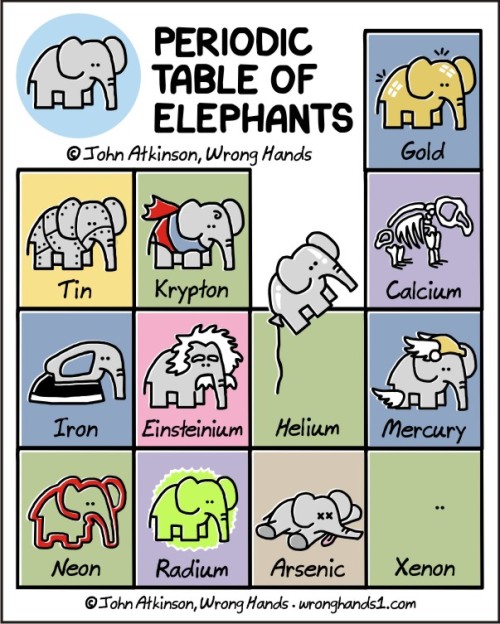Lola1695 - Sem Título









More Posts from Lola1695 and Others
Os quatro planetas gigantes gasosos observados pelo telescópio espacial James Webb

Carina Nebula + Van Gogh
Copyright: @ Alpgenart


The Cartwheel Galaxy
As seen by The Hubble Telescope in visible light and The Webb Telescope in infrared.
Turn the lights up 💡
Hubble | James Webb 🔭
O progresso científico na sua forma mais cristalina
#Nasa #JamesWebbTelescope #HubbleTelescope #Science #Astronomy #TelescópioEspacial #Universo #Ciência #Astronomia #Universe



Ecosocialist praxis

Bendito aquele que semeia livros e faz o povo pensar.
Castro Alves
#DiaMundialDoLivro
#WorldBookDay
12 Great Gifts from Astronomy
This is a season where our thoughts turn to others and many exchange gifts with friends and family. For astronomers, our universe is the gift that keeps on giving. We’ve learned so much about it, but every question we answer leads to new things we want to know. Stars, galaxies, planets, black holes … there are endless wonders to study.
In honor of this time of year, let’s count our way through some of our favorite gifts from astronomy.
Our first astronomical gift is … one planet Earth
So far, there is only one planet that we’ve found that has everything needed to support life as we know it — Earth. Even though we’ve discovered over 5,200 planets outside our solar system, none are quite like home. But the search continues with the help of missions like our Transiting Exoplanet Survey Satellite (TESS). And even you (yes, you!) can help in the search with citizen science programs like Planet Hunters TESS and Backyard Worlds.

Our second astronomical gift is … two giant bubbles
Astronomers found out that our Milky Way galaxy is blowing bubbles — two of them! Each bubble is about 25,000 light-years tall and glows in gamma rays. Scientists using data from our Fermi Gamma-ray Space Telescope discovered these structures in 2010, and we're still learning about them.

Our third astronomical gift is … three types of black holes
Most black holes fit into two size categories: stellar-mass goes up to hundreds of Suns, and supermassive starts at hundreds of thousands of Suns. But what happens between those two? Where are the midsize ones? With the help of NASA’s Hubble Space Telescope, scientists found the best evidence yet for that third, in between type that we call intermediate-mass black holes. The masses of these black holes should range from around a hundred to hundreds of thousands of times the Sun’s mass. The hunt continues for these elusive black holes.

Our fourth and fifth astronomical gifts are … Stephan’s Quintet
When looking at this stunning image of Stephan’s Quintet from our James Webb Space Telescope, it seems like five galaxies are hanging around one another — but did you know that one of the galaxies is much closer than the others? Four of the five galaxies are hanging out together about 290 million light-years away, but the fifth and leftmost galaxy in the image below — called NGC 7320 — is actually closer to Earth at just 40 million light-years away.

Our sixth astronomical gift is … an eclipsing six-star system
Astronomers found a six-star system where all of the stars undergo eclipses, using data from our TESS mission, a supercomputer, and automated eclipse-identifying software. The system, called TYC 7037-89-1, is located 1,900 light-years away in the constellation Eridanus and the first of its kind we’ve found.

Our seventh astronomical gift is … seven Earth-sized planets
In 2017, our now-retired Spitzer Space Telescope helped find seven Earth-size planets around TRAPPIST-1. It remains the largest batch of Earth-size worlds found around a single star and the most rocky planets found in one star’s habitable zone, the range of distances where conditions may be just right to allow the presence of liquid water on a planet’s surface.
Further research has helped us understand the planets’ densities, atmospheres, and more!

Our eighth astronomical gift is … an (almost) eight-foot mirror
The primary mirror on our Nancy Grace Roman Space Telescope is approximately eight feet in diameter, similar to our Hubble Space Telescope. But Roman can survey large regions of the sky over 1,000 times faster, allowing it to hunt for thousands of exoplanets and measure light from a billion galaxies.

Our ninth astronomical gift is … a kilonova nine days later
In 2017, the National Science Foundation (NSF)’s Laser Interferometer Gravitational-Wave Observatory (LIGO) and European Gravitational Observatory’s Virgo detected gravitational waves from a pair of colliding neutron stars. Less than two seconds later, our telescopes detected a burst of gamma rays from the same event. It was the first time light and gravitational waves were seen from the same cosmic source. But then nine days later, astronomers saw X-ray light produced in jets in the collision’s aftermath. This later emission is called a kilonova, and it helped astronomers understand what the slower-moving material is made of.

Our tenth astronomical gift is … NuSTAR’s ten-meter-long mast
Our NuSTAR X-ray observatory is the first space telescope able to focus on high-energy X-rays. Its ten-meter-long (33 foot) mast, which deployed shortly after launch, puts NuSTAR’s detectors at the perfect distance from its reflective optics to focus X-rays. NuSTAR recently celebrated 10 years since its launch in 2012.

Our eleventh astronomical gift is … eleven days of observations
How long did our Hubble Space Telescope stare at a seemingly empty patch of sky to discover it was full of thousands of faint galaxies? More than 11 days of observations came together to capture this amazing image — that’s about 1 million seconds spread over 400 orbits around Earth!

Our twelfth astronomical gift is … a twelve-kilometer radius
Pulsars are collapsed stellar cores that pack the mass of our Sun into a whirling city-sized ball, compressing matter to its limits. Our NICER telescope aboard the International Space Station helped us precisely measure one called J0030 and found it had a radius of about twelve kilometers — roughly the size of Chicago! This discovery has expanded our understanding of pulsars with the most precise and reliable size measurements of any to date.

Stay tuned to NASA Universe on Twitter and Facebook to keep up with what’s going on in the cosmos every day. You can learn more about the universe here.
Make sure to follow us on Tumblr for your regular dose of space!

-
 mayannepinnock liked this · 1 month ago
mayannepinnock liked this · 1 month ago -
 bigwanjeog liked this · 5 months ago
bigwanjeog liked this · 5 months ago -
 rbdstoryx reblogged this · 11 months ago
rbdstoryx reblogged this · 11 months ago -
 rbdstoryx liked this · 11 months ago
rbdstoryx liked this · 11 months ago -
 joandersonjb liked this · 11 months ago
joandersonjb liked this · 11 months ago -
 gabivivi0902 liked this · 1 year ago
gabivivi0902 liked this · 1 year ago -
 one--key liked this · 1 year ago
one--key liked this · 1 year ago -
 krlhsasah liked this · 1 year ago
krlhsasah liked this · 1 year ago -
 fabricioinvisivel liked this · 1 year ago
fabricioinvisivel liked this · 1 year ago -
 bubbleg0mcake liked this · 1 year ago
bubbleg0mcake liked this · 1 year ago -
 sol19lua liked this · 1 year ago
sol19lua liked this · 1 year ago -
 beuponvenus liked this · 1 year ago
beuponvenus liked this · 1 year ago -
 beuponvenus reblogged this · 1 year ago
beuponvenus reblogged this · 1 year ago -
 semcep-blog1 reblogged this · 1 year ago
semcep-blog1 reblogged this · 1 year ago -
 semcep-blog1 liked this · 1 year ago
semcep-blog1 liked this · 1 year ago -
 astronautasolitaria liked this · 1 year ago
astronautasolitaria liked this · 1 year ago -
 randonpanda liked this · 1 year ago
randonpanda liked this · 1 year ago -
 scobellswift liked this · 1 year ago
scobellswift liked this · 1 year ago -
 taciturnidade liked this · 1 year ago
taciturnidade liked this · 1 year ago -
 mizuki0eunseo liked this · 1 year ago
mizuki0eunseo liked this · 1 year ago -
 im-a-sunflower11 reblogged this · 1 year ago
im-a-sunflower11 reblogged this · 1 year ago -
 im-a-sunflower11 liked this · 1 year ago
im-a-sunflower11 liked this · 1 year ago -
 myonceinmylifetime liked this · 1 year ago
myonceinmylifetime liked this · 1 year ago -
 mariahfilhadedeusblog liked this · 1 year ago
mariahfilhadedeusblog liked this · 1 year ago -
 fall2891 reblogged this · 1 year ago
fall2891 reblogged this · 1 year ago -
 fall2891 liked this · 1 year ago
fall2891 liked this · 1 year ago -
 hearts-suicide liked this · 1 year ago
hearts-suicide liked this · 1 year ago -
 luasde-jupiter-blog liked this · 1 year ago
luasde-jupiter-blog liked this · 1 year ago -
 sacideroller reblogged this · 1 year ago
sacideroller reblogged this · 1 year ago -
 akirar-icons liked this · 2 years ago
akirar-icons liked this · 2 years ago -
 cherrycerejarosa liked this · 2 years ago
cherrycerejarosa liked this · 2 years ago -
 vih1sstuff liked this · 2 years ago
vih1sstuff liked this · 2 years ago -
 1astronauta liked this · 2 years ago
1astronauta liked this · 2 years ago -
 girl-anonymous liked this · 2 years ago
girl-anonymous liked this · 2 years ago -
 psychodanie liked this · 2 years ago
psychodanie liked this · 2 years ago -
 thhankunext reblogged this · 2 years ago
thhankunext reblogged this · 2 years ago -
 elaeomar1405 liked this · 2 years ago
elaeomar1405 liked this · 2 years ago -
 angeluz777 reblogged this · 2 years ago
angeluz777 reblogged this · 2 years ago -
 angeluz777 liked this · 2 years ago
angeluz777 liked this · 2 years ago -
 1poeta reblogged this · 2 years ago
1poeta reblogged this · 2 years ago -
 1poeta liked this · 2 years ago
1poeta liked this · 2 years ago -
 rf-brito reblogged this · 2 years ago
rf-brito reblogged this · 2 years ago -
 rf-brito liked this · 2 years ago
rf-brito liked this · 2 years ago -
 yasminarmy15 liked this · 2 years ago
yasminarmy15 liked this · 2 years ago

